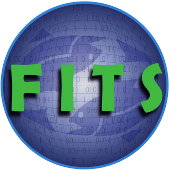Past Workshops
2023 Workshops
Database Concepts, Design, and Application in Wildlife and Fisheries Science.
Instructors: Keith Hurley, Nebraska Game and Parks Commission
New to managing your own data? Not sure how to handle the volumes of information pouring in on your project? This course is for you!
Taught by expert Keith Hurley (Nebraska Game and Parks Commission), this course is designed for anyone who collects and works with data. The focus will be applied fish and wildlife examples, covering topics from basic data management concepts, to planning, to data validation and QA/QC, to basic relational database structure and design.
This is not a specialist-only course! Good data management is essential for good science, and this course will teach you skills that can be applied in almost any position in the fisheries and wildlife fields. The course is appropriate for any level of professional experience, but is targeted toward those who may have limited experience handling their own data.
2019 Workshops
Database Concepts, Design, and Application in Wildlife and Fisheries Science.
Instructors: Keith Hurley, Nebraska Game and Parks Commission
New to managing your own data? Not sure how to handle the volumes of information pouring in on your project? This course is for you!
Taught by expert Keith Hurley (Nebraska Game and Parks Commission), this course is designed for anyone who collects and works with data. The focus will be applied fish and wildlife examples, covering topics from basic data management concepts, to planning, to data validation and QA/QC, to basic relational database structure and design.
This is not a specialist-only course! Good data management is essential for good science, and this course will teach you skills that can be applied in almost any position in the fisheries and wildlife fields. The course is appropriate for any level of professional experience, but is targeted toward those who may have limited experience handling their own data.
2017 Workshops
Beginning/Intermediate GIS for Fisheries Scientist
Instructors: Michael Moore, University of Missouri; Kayla Key, University of Missouri; Jodi Whittier, University of Missouri
Advanced GIS for Fisheries Scientists
Instructors: Michael Moore, University of Missouri; Kayla Key, University of Missouri, Jodi Whittier, University of Missouri
2016 Workshops
Beginning/Intermediate GIS for Fisheries Scientists
Instructors: Jacob Schwoerer, University of Missouri – Columbia; Nick Sievert, University of Missouri – Columbia
This course will provide an overview of beginning/intermediate GIS skills for fisheries biologist using ArcGIS, including use of existing data, creating your own data, and review of fundamental concepts for GIS.
2015 Workshops
Beginning/Intermediate GIS for Fisheries Scientists
Nick Sievert, University of Missouri Cooperative Fish and Wildlife Research Unit; nas4tf@mail.missouri.edu
Jacob Schwoerer, University of Missouri; jschwoerer@missouri.edu
This course will provide an overview of beginning/intermediate GIS skills for fisheries biologists using ArcGIS, including use of existing data, creating your own data, and review of fundamental concepts for GIS.
2009 Workshops
Mapping Aquatic Habitat using Low-Cost Side Scan Sonar and GIS
Instructors: Adam J. Kaeser, 229-430-4256, adam.kaeser@dnr.state.ga.us
Thomas L. Litts, 770-761-3014, thom.litts@dnr.state.ga.us
Georgia Department of Natural Resources
Session I Introduction to side scan sonar and image interpretation
Session II Mission planning and execution (capturing and working with sonar data)
Session III Image processing in ArcGIS (practical demonstration)
Session IV Habitat map development and applications
A need exists within the natural resource community for an inexpensive and rapid technique to map and quantify aquatic habitat features in navigable waterways. The HumminbirdÒ Side Imaging system allows users to quickly capture high-resolution, geo-spatially referenced images of underwater habitat. Unlike more expensive side scan systems, the HumminbirdÒ system employs a boat mounted transducer that allows for the survey of shallow, rocky environments. We have developed a technique utilizing ArcGIS 9.x to transform HumminbirdÒ images into georeferenced sonar image maps (SIMS). These maps show underwater habitat in a spatial context and can be used within a GIS to map, measure and quantify features such as; rocky areas, large woody debris and areas of fine sediment (sand/mud). The potential fisheries applications for such detailed habitat maps are numerous and widespread, and the tools and techniques to develop such maps are just now within reach natural resource professionals and their agencies/institutions.
2008 Workshops
“An introduction to the program R for fisheries scientists”
A workshop at the 2008 AFS Annual Meeting in Ottawa
Background: The language R is a powerful open-source mathematical and statistical software program (available for free at: http://www.r-project.org/). The program R is becoming increasingly popular among ecological and fisheries scientists because of (1) the extensive number of built in tools that can be used for data analysis and modeling and (2) the ability to easily create one’s own scripting programs. The goals of this workshop are to teach the basics for getting started in R (and using a command line interface) as well as to introduce participants to the capabilities of this powerful programming package. We assume that participants have no experience in R.
Objectives: 1. Perform interactive computations – use R as a calculator, assign variables, find and use built-in functions 2. Import data into R – enter data as well as read in datasets 3. Plot data and develop graphics – overview of graphical capabilities of R 4. Perform simple statistical analyses 5. Obtain help in R – review available web sources and how to use the help commands within the program 6. Introduction to R capabilities
This workshop will emphasize the utility of R in fisheries research. Examples will focus on current issues in fisheries science such as estimating stock-recruitment relationships, fitting length-at-age data to a von Bertalanffy growth model, projecting population trends, etc.

